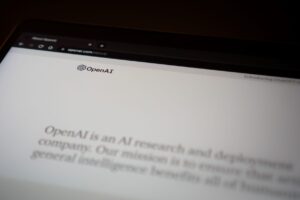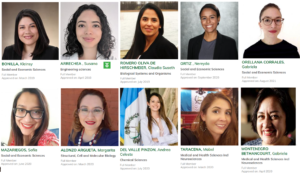Understanding the country context: why it is important
Abdullah Shams Bin Tariq from Bangladesh urges publishers to take advice from organizations such as INASP in understanding country context and to follow #inaspPrinciples
When INASP wrote its Principles of Responsible Engagement for publishers working with developing countries, as the first principle, it urged publishers to make an effort to understand country contexts.
Publishers generally have a price-list and licence that applies across all or most developed countries. It is therefore perhaps natural for them to ask: Why should one insist on considering individual country contexts for developing countries? And, if it is to be considered – how can it be done with so many countries?
In developed countries, standards exist and institutions have the ability to conform. The libraries will have a budget and may or may not purchase, depending on competing needs and available budget.
On the other hand, in developing countries, apart from a handful of institutions that might be trying to imitate ‘western standards’, budgets might be meagre or even zero. Interest in resources such as journals or databases may be limited to a minority and often they would be fighting an uphill battle to allocate some money for these. And then there will be diverse issues making it uniquely complicated. Hard-to-understand peculiarities make it even more challenging. There is no “one solution that fits all”.
Let us try to understand some aspects of what may make it different in developing countries. The level of poverty is difficult to comprehend with minimum wages dipping to a few pennies per hour. Even university professors may be on low salaries. There are likely to be low allocations for research and resources; and libraries may come near the very bottom of the list when it comes to funding. Even in the countries that are investing significantly in higher education, barring a few ‘centres of excellence’, many or most institutions may have starving libraries. Research output and engagement may be low, setting priority for funds even lower. At many institutions the decision makers would not support spending for access. Some may even consider it a waste of money.
Decisions are often not made by the library, but by another administrative layer. The consortium may be newly formed and still have vulnerabilities affecting its ability to purchase.
In many countries, connectivity is a big issue, with those outside the capital city more likely to lose out. The low reliability of internet connectivity, coupled with poor library staff skills, may mean that users can really struggle to access content. They may even not have access to what they have paid for – only for maintenance.
There are many other uniquely developing-world issues that publishers might come up against, such as how changes in institutional or country leadership can lead to attempts to discredit or discontinue programmes. One may also find a distrust of stakeholders from home and abroad and negative reactions to foreign initiatives, sometimes as a legacy of colonial pasts.
There may also be a trend of piracy and violation of copyright. Some people would be happy to explore back routes to access e.g. passwords from abroad. It is then an uphill task to set up paid, standard, copyright-protected access in place of “easy” and “free” back routes.
It is natural for publishers to ask how they can consider these individualized contexts in the developing world given the extra effort, time and resources necessary to do so – particularly when these regions are some of the least likely to yield immediately profitable returns. Is it practical or even possible to deal with such diverse contexts? One must accept that, for publishers, this would amount to a huge logistical challenge. INASP and the consortia it works with are willing to help you understand the contexts of each country.
I believe it is possible to chart an individualized approach to the various countries, and I believe that the INASP model has made a start in mapping out this possibility, which could work even in direct publisher-to-country negotiations, as long as the publisher was consistent.
The model uses the innovative idea of variable pricing for different countries, opening up the opportunity for each country to obtain a deal that might be within its reach. It is amazing how rates could be negotiated that are challenging (we have to work hard to renew every year) yet just within stretching distance. Even with the significant discounts negotiated by INASP this has never been an easy ride.
In exchange, we get a standard service with access provided in the same manner as other subscribers, and not via any special new platform. This also leads to standard rights available only to subscribers, such as perpetual access. Technical support is also standardized: institutions that pay less still get exactly the same level of service.
The publisher can see some, albeit small, commercial benefit, and more importantly, they see the creation of a stable customer base in countries where it would be difficult to obtain long-term customers at their own prices and through their own marketing channels.
Probably most importantly for long-term sustainability, it creates a win-win scenario for all parties.
Let us build on the good work done by organizations like INASP in partnership with publishers and other stakeholders in understanding and adapting to country contexts. Rather than breaking away from this, try to continue in the quest of a sustainable solution for a less divided world.
Join the conversation on Twitter using the hashtag #inaspPrinciples
Dr Abdullah Shams Bin Tariq is a Professor at the Department of Physics and Deputy Director at the Centre of Excellence in Teaching and Learning at the University of Rajshahi in Bangladesh. He was due to speak at the 2015 Publishers for Development conference but was unable to attend.
He has had a pioneering role in the Bangladesh INASP-PERii Consortium. He is a member of the Global Young Academy, where he leads a Working Group on Global Access to Research Software and has also been a member of its Executive Committee for two terms. His first contact with INASP was in 2004 when he was in the UK studying for a PhD on a Commonwealth Scholarship. He has volunteered to coordinate e-resource access, provide technical support and has trained several hundreds of library staff and users around the country.




